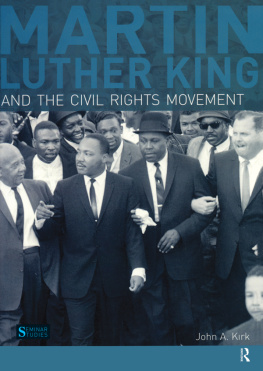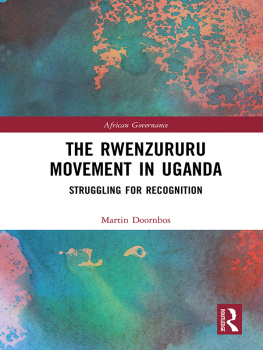This is a study of the social organization of the Harambee self-help movement in Kenya in the early 1970s, focusing on the Kamba (or Akamba) people of Kitui district in eastern Kenya. As a case study in the anthropology of development, it covers a wider field than has been conventional in social anthropology, but the collection and presentation of ethnographic data have been restricted to the main theme of the study. It is hoped that this approach will provide new insights into die Harambee movement in Kenya and also make a useful contribution to the ethnographic and historical study of Kitui Kamba culture and society.
Research was based on extended fieldwork in Kitui during 19734 while I was a postgraduate student in the Department of Anthropology at the London School of Economics. During seventeen months fieldwork, I lived mosdy in a village in Kitui. I was affiliated to the University of Nairobi as a research student in the Bureau of Educational Research of the Faculty of Education, which was later relocated at Kenyatta University. My subsequent work since 1976 for an international non-governmental organization did not give me the opportunity to visit Kitui again for more research. Professional responsibilities and family commitments resulted in a much-regretted interruption of several years in writing up this fieldwork material. This book is a revised version of my doctoral thesis, which was accepted by the University of London in 1990.
I gratefully acknowledge financial assistance from the Social Science Research Council (UK) for this research, and grants towards fieldwork expenses and tuition fees from the Central Research Fund of the University of London and the Radcliffe Brown Memorial Fund of the Association of Social Anthropologists.
I received valuable comments on papers given at seminars at the University of Nairobi, the Institute of Development Studies in Nairobi, the London School of Economics, the African Studies Centre at Cambridge University, the African Studies Department at Sussex University, and the Institute of Education in London. I am particularly grateful for comments on the earlier stages of this work from Dr Stephen Morris and Professor Jean la Fontaine of the Department of Anthropology at the London School of Economics, and valuable advice and encouragement later on from Dr Peter Loizos of the same department.
Thanks are also due to Jane Pugh, chief cartographer in the LSE geography department, for re-drawing my maps, and to Karl Fulton for printing my photographs.
I owe a debt of gratitude to die family in Kamale village in Kitui with whom I lived in 19734. Samuel Muema wa Mutinda gave me much brotherly help, and his father, Mutinda wa Ndinga, gave me my Kamba name (Mutua wa Mutinda), my adoptive lineage (Mbaa Kanyaa), and paternal advice and protection. I particularly acknowledge the invaluable research assistance of Ngui wa Kitunguu, a secondary school graduate from the village.
The Chief of Nzambani location, Charles Musyoka wa Matuku, gave me permission to stay in the location and introduced me to Kamale village. He was always most helpful and friendly to me, over and above his official position, and I endeavoured to reciprocate by helping in a small way at the Harambee school in Nzambani then being planned, which was the main reason for my selecting that area for fieldwork. I wish also to record my deep appreciation to Dr Paul Ndilya wa Kavyu, currently head of the Department of Music at Kenyatta University, who was at the time conducting ethno-musicological research in his home district of Kitui, for his friendship and encouragement.
To the people of Kamale, I express my gratitude for their generous reception of me as an adopted stranger in their midst. They and coundess other people in Kitui gave me friendly help with my research.
Finally, deepest thanks to my wife, Dawn Hill, who lightened the difficult time of fieldwork by visiting me twice at my temporary home in Kitui (where she was renamed Mwikali wa Mutua), and who - with our children Carolyne and Andrew, bom later in London - gave me support and encouragement in the equally difficult final writing stages.
Martin Hill
London, 1991
1
Introduction
Kenya has a pronounced history of self-help organization starting in the British colonial period but much more developed since Independence in 1963. The Kenyan self-help movement, known as the Harambee movement, has been a marked feature of both rural and national society. It is perhaps the best-known self-help movement in an African or Third World country. Particularly during its first decade and under the first post-Independence government of President Jomo Kenyatta from 1963 to 1978, the Harambee movement was of major social and political importance to the new nation. It embraced a wide range of self-help structures from village to national level throughout the whole country, and performed many secondary political functions too.
The period of fieldwork in 19734 on which this study is based was within this take-off phase of the Harambee movement. Harambee was already by then evolving at different rates in different parts of Kenya - faster in more developed areas, slower in less developed areas - and virtually the whole nation was involved in it. Although some critical voices were being raised, it appeared to most participants and observers at the time as essentially positive in most respects. Since 1974 the Harambee movement has continued to expand, mostly in the directions already present then, but no further fieldwork has been undertaken by myself. This is therefore essentially a study of the first decade of the Harambee movement.











